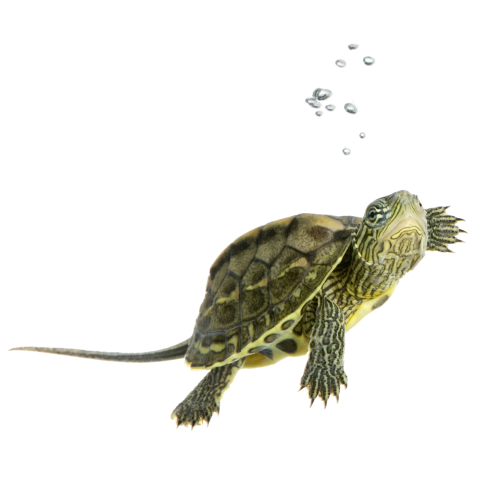Ammonia
Ammonia is a colourless highly irritating gas with a sharp suffocating odor. It dissolves easily in water to form an ammonium hydroxide solution which can cause irritation and burns. Ammonia gas is easily compressed and forms a clear, colourless liquid under pressure.
Ammonia and aquarium

How ammonia is formed in aquariums?
Fishes are mainly ammoniotelic organisms, that is they excrete ammonia as their waste product just as humans excrete urea as theirs’ through urine. Ammonia is the metabolic waste product coming from nitrogenous substances like protein. And also by the breakdown of leftover food, excrement and plants, etc. The decomposition of dead algae will also add up the ammonia load. Ammonia is formed as metabolic waste mainly removed through gills, less amount also through urine and faeces. Total ammonia in a tank is the sum of unionized(NH3) and ionised(NH4+). Unionized ammonia is the toxic one whereas ionised ammonium ions are safer. Their relative proportion is decided by pH and temperature. If pH reduces, H+ concentration in water will increase which will eventually help to ionise ammonia also. So reducing pH to a certain safe range will help to reduce the toxicity of ammonia.
Periodic checking of ammonia

Ammonia is a potent silent killer whose safe range is only 0 ppm. Even a small increment in this level can harm the fish to a larger extent and most of the time it will kill the fish very fast. Sometimes fish can survive a small increase over a period of time but sudden change will definitely be going to kill your fish.
So it is very important for any hobbyist to keep the aquarium crystal clean without ammonia and check the water quality of new water if there is a need for water change or if you want to change the fish from one tank to another.
Since ammonia is a dangerous substance which can be introduced by fish itself, periodic and systematic checking of ammonia is indeed an important duty as a hobbyist.
To minimize the physical labour and increase efficiency and accuracy during the testing of ammonia… We Horizone family introduce before you, the ultra-fast and ultra-accurate Zera ammonia test kit.
Prevention is always better than cure. So be careful with your tiny ones. Protect them from the most potent killer by just checking ammonia in 0 levels.

How to reduce ammonia levels in tanks naturally

Reducing ammonia involves many steps. It needs systematic measuring of the ammonia and identifying the correct reason behind the rise in levels. If we say in medico terms, like treating underlying conditions more than just symptomatic treatment always.
Identify the reason behind high ammonia.
1. check the source of water
Most of the time people are using either tap water or water directly from natural wells. Since water coming through tap water, will be safe since they are meant to be drunk also, they contain no ammonia at all in usual cases. Even After checking all probable conditions, if ammonia is still increasing then it’s worth checking the tap water also.
2. Check for excretes of fishes
If you can see a lot of fish excrete float around the fish tank it could be the reason for high-level ammonia.
So whenever you see such solid wastes just remove them and do a partial water change on a regular basis.
3. Check for any decomposition in the fish tank
The decomposition process greatly results in increased ammonia levels. So check for any kind of decomposition or decomposition products inside the tank and remove them instantly. Example: Uneaten food: most cases in which overfeeding can results in excess food particles inside the water and their decomposition will result in ammonia rise. So feed your fish as per the need only. Not overfeeding or underfeeding. Always remember the optimum amount of food is another important factor in maintaining fish health at maximum. Decomposing organic matter including aquatic plants and microorganisms: because their breakdown will result in protein digestion which will lead to ammonia rise. So clean out all decomposing matters from the tank and always keep your tank clean and healthy.
Reduce the ammonia level in the water.
1. Regular water changes
Partial water changes are an excellent way to reduce ammonia easily and efficiently, and also help to keep your aquarium water clean and clear. Why partial change not complete change? because no organism can cope with the sudden change in its habitat.
2. Scoop out all organic matter and decomposition products.
Breaking down of organic matter will results in the breakdown of protein and finally the ammonia rise. So don’t let the organic matter pile up.
3. Biofilter mechanism

Ammonia is removed from an aquarium system through the use of a biofilter. The biofilter provides a substrate on which nitrifying bacteria grow. These nitrifying bacteria consume ammonia and produce nitrite, which is also toxic to fish. Other nitrifying bacteria in the biofilter consume nitrite and produce nitrate. Nitrate is not toxic to most freshwater fish, except in high levels, and can be reduced sufficiently through periodic water changes. Some nitrate will also be utilized by plants. In natural systems and some aquarium systems, nitrate is converted to nitrogen gas by denitrifying bacteria. This conversion from ammonia to nitrite to nitrate to nitrogen gas is known as the nitrogen cycle.





















